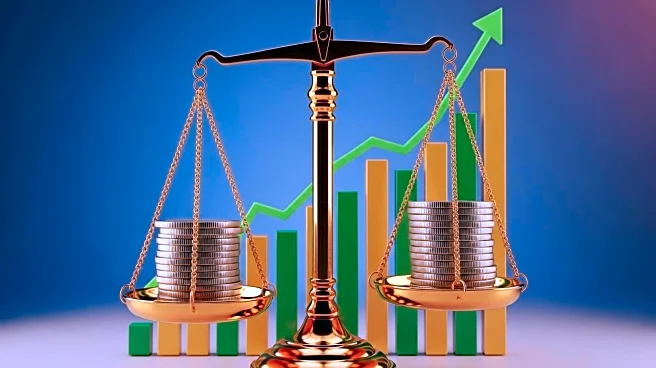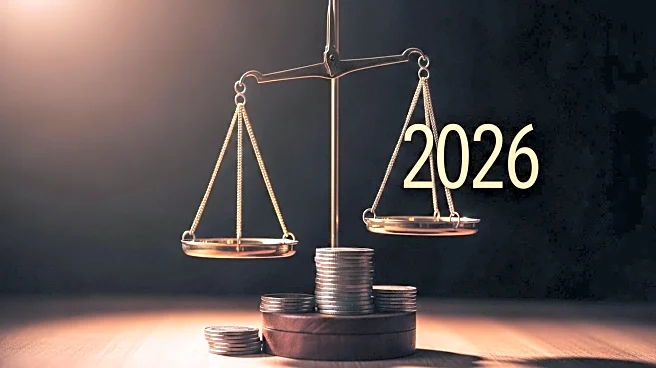What's Happening?
The Internal Revenue Service (IRS) has announced changes to the capital gains tax brackets for the tax year 2026. These adjustments will allow individuals and married couples to earn more while still qualifying for lower tax rates on their capital gains. Specifically, individuals with taxable income up to $49,450 and married couples filing jointly with incomes up to $98,900 will qualify for a 0% tax rate on long-term capital gains. Those earning up to $545,500 individually or $613,700 jointly will be taxed at a 15% rate, while earnings above these thresholds will incur a 20% tax rate. These changes are part of a broader update to tax rules, including adjustments to regular income tax brackets. The IRS's decision aims to provide taxpayers with more favorable conditions for managing their investment profits.
Why It's Important?
The adjustment of capital gains tax brackets by the IRS is significant for investors and taxpayers, as it potentially reduces the tax burden on investment profits. This change can encourage more investment activity, as individuals and couples can retain a larger portion of their gains. The ability to earn more while paying lower taxes may stimulate economic activity and investment in various sectors. Additionally, the changes could influence financial planning strategies, prompting investors to reassess their portfolios and consider tax-loss harvesting to optimize their tax liabilities. Overall, these adjustments may have a positive impact on the financial well-being of taxpayers and contribute to economic growth.
What's Next?
As the new tax brackets take effect in 2026, taxpayers and financial planners will need to evaluate their investment strategies to maximize benefits under the updated rules. The last quarter of 2025 will be crucial for investors to assess their capital gains and losses, potentially engaging in tax-loss harvesting to offset gains and reduce tax liabilities. Financial professionals will play a key role in advising clients on how to navigate these changes and avoid any IRS rule violations. Additionally, taxpayers should stay informed about any further updates or clarifications from the IRS regarding these tax adjustments.
Beyond the Headlines
The IRS's decision to adjust capital gains tax brackets may have broader implications for tax policy and economic inequality. By allowing higher earnings at lower tax rates, the changes could contribute to wealth accumulation among investors, potentially widening the gap between different income groups. This development may also spark discussions on tax reform and the balance between encouraging investment and ensuring equitable tax contributions. Furthermore, the adjustments could influence legislative priorities and debates on tax policy in the coming years.










